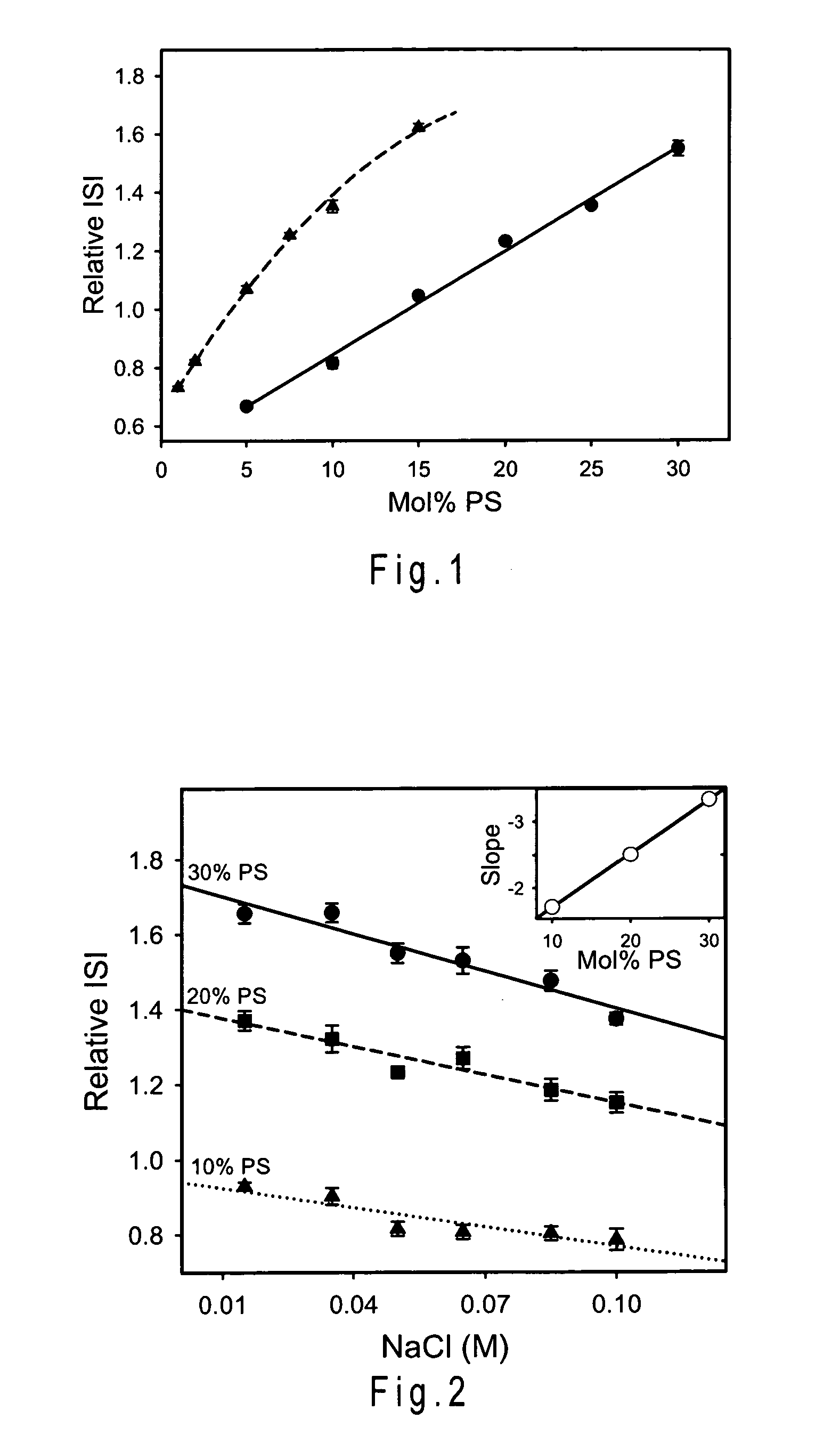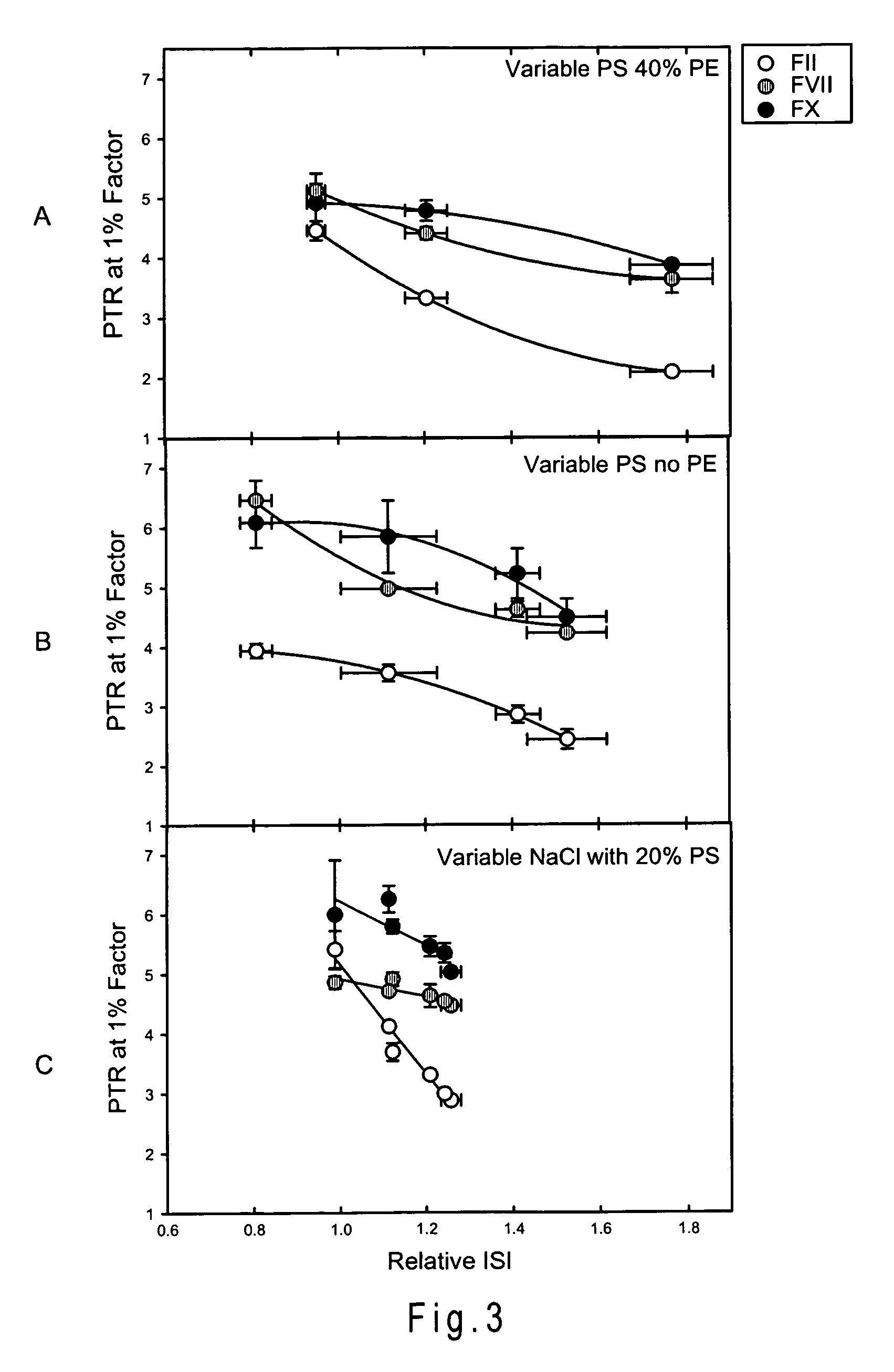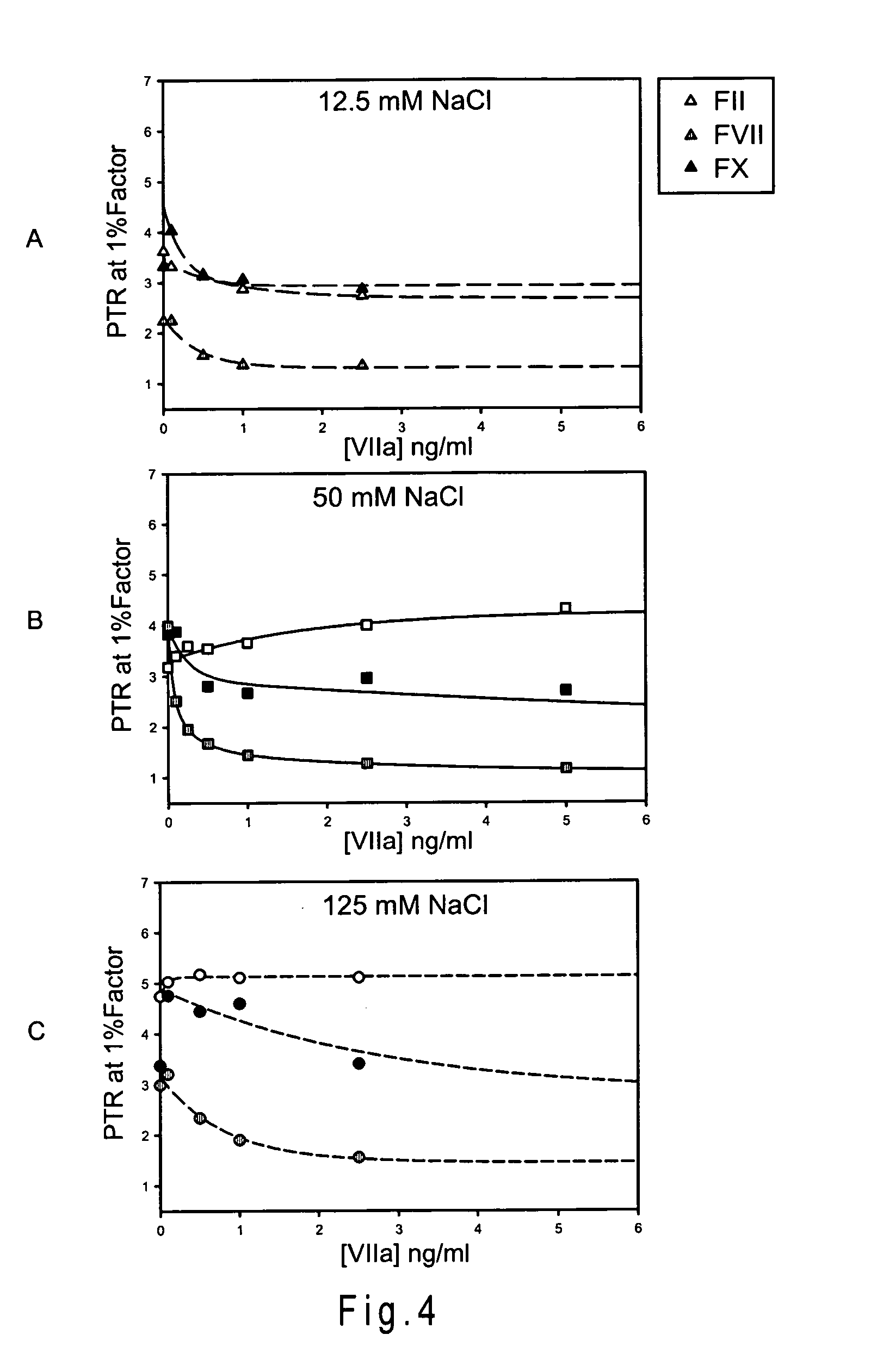Thromboplastin reagents
a technology of thromboplastin and reagents, which is applied in the field of thromboplastin reagents, can solve the problems of insufficient isi value for each new lot of thromboplastin reagents, markedly different dosing of oral anticoagulants, and criticized on a number of grounds
- Summary
- Abstract
- Description
- Claims
- Application Information
AI Technical Summary
Benefits of technology
Problems solved by technology
Method used
Image
Examples
examples
[0048]Varying the Ratio of Phospholipid to rTF does not Affect ISI
[0049]The purpose of this study was to identify which properties of synthetic thromboplastin reagents determine their ISI values. To do so, the composition of such reagents was systematically varied and the impact on relative ISI was measured. One of the variables that can be controlled during relipidation of rTF is the ratio of phospholipid to tissue factor. This was achieved during relipidation by holding the total phospholipid concentration constant while varying the rTF concentration. In this series of experiments, the phospholipid composition was 20 mol % PS and 80 mol % PC, and the molar ratios of total phospholipid to rTF varied over a wide range, from 1000:1 to 300,000:1. Varying the ratio of phospholipid to rTF in synthetic thromboplastin reagents had little or no effect on ISI.
[0050]Phospholipid Composition
[0051]Another variable that can be controlled in synthetic thromboplastin preparations is the phospholi...
PUM
| Property | Measurement | Unit |
|---|---|---|
| clotting time | aaaaa | aaaaa |
| clotting time | aaaaa | aaaaa |
| molar ratios | aaaaa | aaaaa |
Abstract
Description
Claims
Application Information
 Login to View More
Login to View More - R&D
- Intellectual Property
- Life Sciences
- Materials
- Tech Scout
- Unparalleled Data Quality
- Higher Quality Content
- 60% Fewer Hallucinations
Browse by: Latest US Patents, China's latest patents, Technical Efficacy Thesaurus, Application Domain, Technology Topic, Popular Technical Reports.
© 2025 PatSnap. All rights reserved.Legal|Privacy policy|Modern Slavery Act Transparency Statement|Sitemap|About US| Contact US: help@patsnap.com



